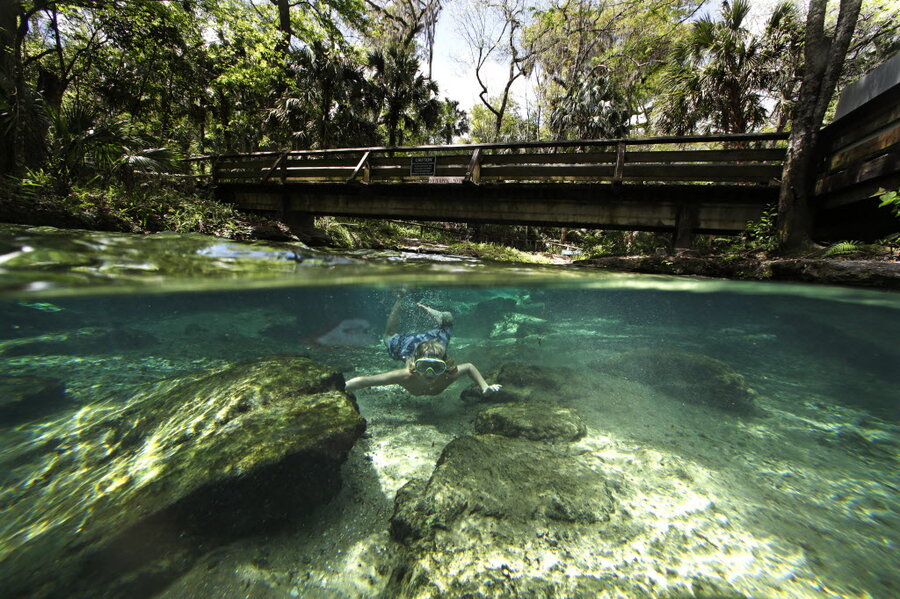Celebrating #worldwaterday: how to save a precious resource
March 22nd, World Water Day, is a day to celebrate one of the planet’s most precious resources, fresh water. But that resource is being rapidly depleted.
“The world is thirsty because it is hungry,” reports the U.N. Food and Agriculture Organization (FAO). Forty-seven percent of the global population could be living under severe water stress by 2050, according to the Organization for Economic Cooperation and Development (OECD).
Agriculture is a major user of both ground and surface water for irrigation—accounting for about 70 percent of water withdrawal worldwide. As water supplies face growing pressures from a growing population, climate change, and an already troubled food system, water security has become even more important. Unfortunately, we are way behind in our efforts to protect both the quantity and quality of the water our growing world needs today.
Irrigation causes excessive water depletion from aquifers, erosion, and soil degradation, but more sustainable irrigation practices, including center pivot irrigation systems and solar drip irrigation, can help improve crop productivity and yields and reduce water usage. Using rainwater harvesting, zai pits, micro-irrigation, bottle irrigation, gravity drip buckets, rotational grazing systems, and other water-saving practices can all help create diverse landscapes, supporting wildlife and culture.
In fact, all over the world farmers are using innovative practices to utilize water more efficiently and in lesser quantities to produce more nutritious foods. And eaters can profoundly reduce water waste and consumption through the food choices they make each day.
In India, the Watershed Organization Trust (WOTR) regenerates watershed communities by harvesting rainwater, organizing communities to sustainably manage the land, optimizing irrigation, and planting crops based on water availability. WOTR has reached more than 300,000 people in 300 villages, rejuvenating 200,000 hectares of land.
Perennial crops protect the soil longer than annual crops, which reduces water loss from runoff. Jerry Glover, agroecologist and Senior Sustainable Agriculture Advisor to the U.S. Agency for International Development, explains, “perennial roots go deep — some as deep as 10 feet — and they will sustain the plant for many years. Way down there, the roots can capture more groundwater. Those deep, better-established roots also help cycle nutrients in the soil and make them more available to plants.” Developing perennial varieties of grains, legumes, and vegetables can help save precious soil. Researchers at The Land Institute are currently working to develop perennial grain varieties that create substantial yields—and more resilient food systems.
Using soil conservation techniques, including no-till farming, can make some of the biggest differences when it comes water use. According to the FAO, no-till farming techniques increase the amount of water that land can hold, and improve crops’ ability to use water resources efficiently.
According to Matthew Liebman, Professor of Agronomy and Wallace Chair for Sustainable Agriculture at Iowa State University, “conversion of small amounts of corn and soybean fields to prairie buffer strips can provide disproportionately large improvements in soil and water conservation, nutrient retention, and densities of native plants and birds.” His research focuses on crop rotations, cover crops, green manures, intercrops, conservation strips, animal manures, and composting. “I want to see conservation practices put in place across the landscape now and further developed by the next generation of scientists and farmers,” Liebman explains.
And soil health is also critical to water conservation. 2015 has been designated by the United Nations as the International Year of Soils. Practices like incorporating cover crops, planting trees on farms, and intercropping, or planting complementary crops in the same field, can help keep nutrients and water in the soil. These practices can protect plants from drought and make sure that every drop of water from rain or irrigation can be used. Fazenda da Toca in Sao Paulo, Brazil is an organic family farm using agroecological principles, including better water conservation practices. “I believe it is possible to create abundance without destroying the planet. We could thrive with it instead,” explained Pedro Diniz, founder of Fazenda da Toca. The methods used on Diniz’s farm also restore degraded soils, produce high yields, and eliminate the use of pesticides.
And eaters and consumers can all do their part to save water by incorporating more native foods into their diets, eating more locally grown foods and less meat, eggs, and dairy produced in industrial operations, reducing food waste, reconsidering lawn and garden irrigation methods, and supporting family farmers that use less water intensive practices.
This World Water Day we honor the projects, people, and programs working tirelessly to achieve more with less water and creating innovative systems for the future.






